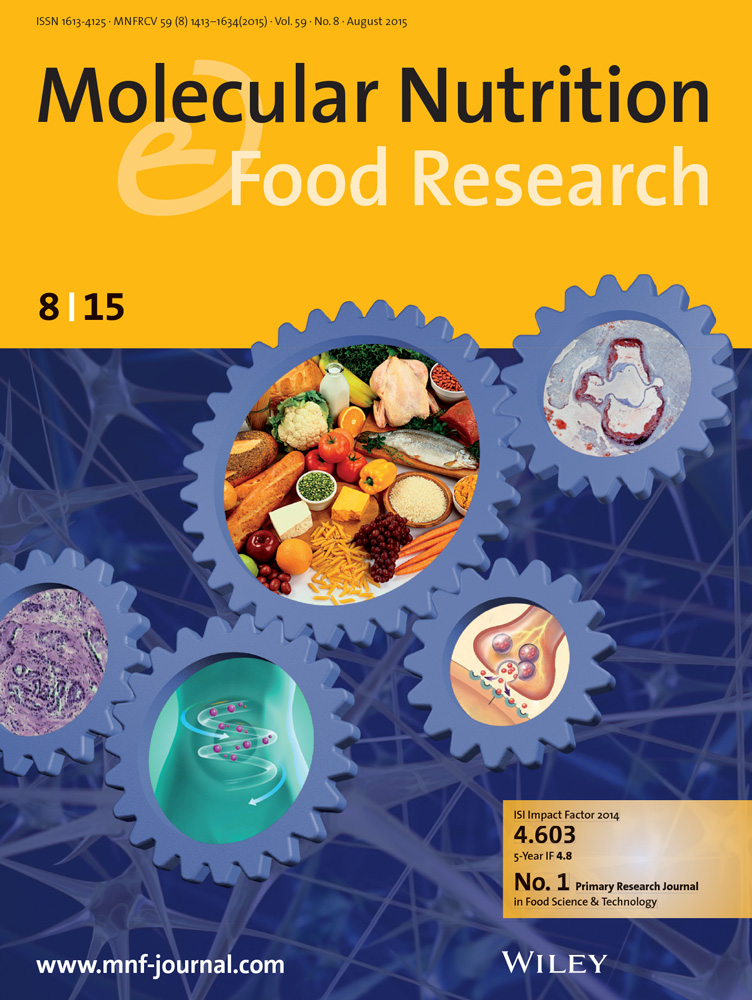食用超加工食品与非酒精性脂肪性肝病的风险:韩国基因组和流行病学研究的前瞻性分析
IF 4.5
2区 农林科学
Q1 FOOD SCIENCE & TECHNOLOGY
引用次数: 0
摘要
超加工食品(upf)消费与非酒精性脂肪性肝病(NAFLD)之间的关系尚不清楚;因此,我们调查了韩国成年人UPF消费与NAFLD风险之间的关系。这项队列研究包括44 642名年龄在40-69岁之间的韩国成年人,使用来自健康检查数据库的数据。根据处理程度,采用NOVA分类系统对UPF进行分类。多变量Cox比例风险模型评估了UPF消费与NAFLD风险之间的关系。在4.2年的随访期间,1562名(3.5%)参与者发展为NAFLD。在对潜在混杂因素进行调整后,UPF的高摄入量分别与男性和女性NAFLD风险增加35%(6%,71%)和48%(19%,86%)相关。在连续分析和敏感性分析中观察到类似的结果。在不同的UPF亚型中,拉面消费与NAFLD风险的负相关在男性和女性中都是最强的(男性风险比= 2.05 [1.59,2.65];女性为1.80[1.48,2.19])。我们的研究结果表明,较高的UPF摄入量与NAFLD风险增加有关。有必要在更广泛的人群中进行进一步的全面调查,以证实和巩固这些结果。本文章由计算机程序翻译,如有差异,请以英文原文为准。
Consumption of Ultra-Processed Food and Risk of Non-Alcoholic Fatty Liver Disease: A Prospective Analysis of the Korean Genome and Epidemiology Study.
The association between ultra-processed foods (UPFs) consumption and non-alcoholic fatty liver disease (NAFLD) remains unclear; therefore, we investigated the association between UPF consumption and the risk of NAFLD among Korean adults. This cohort study included 44 642 Korean adults aged 40-69 years, utilizing data from the Health Examinees database. UPF were categorized according to the NOVA classification system based on the degree of processing. A multivariable Cox proportional hazards model assessed the association between UPF consumption and NAFLD risk. Over a 4.2-year follow-up period, 1562 (3.5%) participants developed NAFLD. After adjusting for potential confounders, higher UPF consumption was associated with a 35% (6%, 71%) and 48% (19%, 86%) increased risk of NAFLD in men and women, respectively. Similar results were observed in both continuous and sensitivity analyses. Among the diverse UPF subtypes, ramen consumption showed the strongest adverse association with NAFLD risk in both men and women (hazard ratio = 2.05 [1.59, 2.65] in men; 1.80 [1.48, 2.19] in women). Our findings suggest that higher UPF consumption is linked to an increased risk of NAFLD. Further comprehensive investigations in a broader spectrum of populations are warranted to corroborate and fortify these results.
求助全文
通过发布文献求助,成功后即可免费获取论文全文。
去求助
来源期刊

Molecular Nutrition & Food Research
工程技术-食品科技
CiteScore
8.70
自引率
1.90%
发文量
250
审稿时长
1.7 months
期刊介绍:
Molecular Nutrition & Food Research is a primary research journal devoted to health, safety and all aspects of molecular nutrition such as nutritional biochemistry, nutrigenomics and metabolomics aiming to link the information arising from related disciplines:
Bioactivity: Nutritional and medical effects of food constituents including bioavailability and kinetics.
Immunology: Understanding the interactions of food and the immune system.
Microbiology: Food spoilage, food pathogens, chemical and physical approaches of fermented foods and novel microbial processes.
Chemistry: Isolation and analysis of bioactive food ingredients while considering environmental aspects.
 求助内容:
求助内容: 应助结果提醒方式:
应助结果提醒方式:


